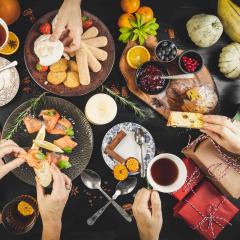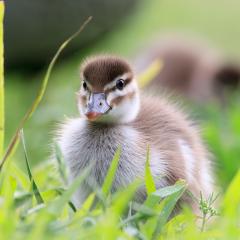As part of International Compost Awareness Week 2020 (3–9 May) we are highlighting various composting initiatives on our campuses.
Food waste is a serious polluter contributing to the climate crisis. It releases methane as it rots in landfill, and as uneaten food has been resourced through the global food system, it has a significant carbon footprint. This issue has driven a push for separating food and garden organics for processing and re-use, not only at the household level, but local governments and significantly sized organisation and institutions such as UQ are also collecting organic waste for recycling.
However, it begs then questions—then what? Where does it go and what is it used for? The ability of governments at all levels to expand organic recycling activities depends on the development, manufacturing and supply of high-quality, value-added recycled organic products that deliver real benefits to agricultural and horticultural users, and are sought after by farmers.
Centre for Recycling of Organic Waste and Nutrients
Enter UQ’s Centre for Recycling of Organic Waste and Nutrients (CROWN). Located at UQ Gatton, CROWN collaborates with governments, businesses and natural resource management groups to develop innovative ways to efficiently use this recycled resource, to reduce negative environmental impacts, and to move towards a circular economy for organics.
What is a circular economy for organics?
Food and other organic resources are processed, consumed, and then become ‘waste’ in the form of discarded by-products, food waste, and sewage. In Australia in 2014–2015 we generated 13 million tonnes of organic waste or 542 kg per capita. If organic resources are managed effectively, they can be part of a circular economy for food that helps rebuild soil health, recovers valuable resources, and provides feedstock for factories or energy plants. CROWN defines the circular economy for organics as a self-sustaining organics recycling supply chain driven by demand and economic advantage, where additional benefits and costs are shared in an equitable and mutually acceptable way.
And yet even in advanced OECD countries, less than 40% of organics are recycled into valuable uses with tonnes of potentially recoverable resources wasted. The result is economic losses, expensive and potentially polluting landfills, and significant greenhouse gas emissions—all hallmarks of a linear take-make-waste system. Transforming discarded food resources into valuable products requires organic materials to be collected in well-managed separation schemes with high participation and capture rates, providing raw materials with minimal contamination such as plastic, glass or metal. This is where CROWN’s research is working to make a difference.
Robo-bins
For example, they have partnered with QUT’s School of Electrical Engineering and Robotics to develop a robotic bin to separate organic food waste at the point of collection, and reduce contamination. Sorting of waste is often treated at the end stage of product cycle at centralised waste recycling facilities. The robotic bin technology will decentralise the waste sorting problem by combining intelligent optoelectronic sensors, robotics and machine learning and will target primarily residential high rise buildings where segregation and contamination are traditionally very poor. The team are also looking into incorporating user behaviour and payment or rewards systems.
Nutrient calculators
CROWN is also part of a team developing a nutrient calculator tool for farmers that use compost. It can be difficult for farmers and growers to determine how to make the most of a particular type of compost. This can result in both soil nutrient imbalances and farmers not accounting for the true value or true cost of compost in the price of their production. CROWN is working on a tool that will calculate the total and available amount of nutrients contained in various compost products from urban and rural sources and assess the optimal rate it should be applied at over time, showing farmers by how much they can reduce mineral fertiliser use, and how much money they can save. The recommendations generated by the calculator are currently being demonstrated at 12 on-farm sites using 15 different organic ‘amendments’.
The trial and demonstration sites are located in some of Australia’s most productive agricultural regions and close to ready supplies of organic amendments, to minimise transport costs. CROWN is interested in promoting on-farm composting of agricultural, commercial and local government-collected organic residues.
New fields of study
In July, Dr Stephan Tait will be joining the CROWN team. Dr Tait is an expert in anaerobic digestion and the production and use of biogas. Anaerobic digestion is the second key processing technology for recycling food organics, although at present it is hardly employed in Australia. CROWN’s newly acquired expertise and research in this area will work towards delivering change.



